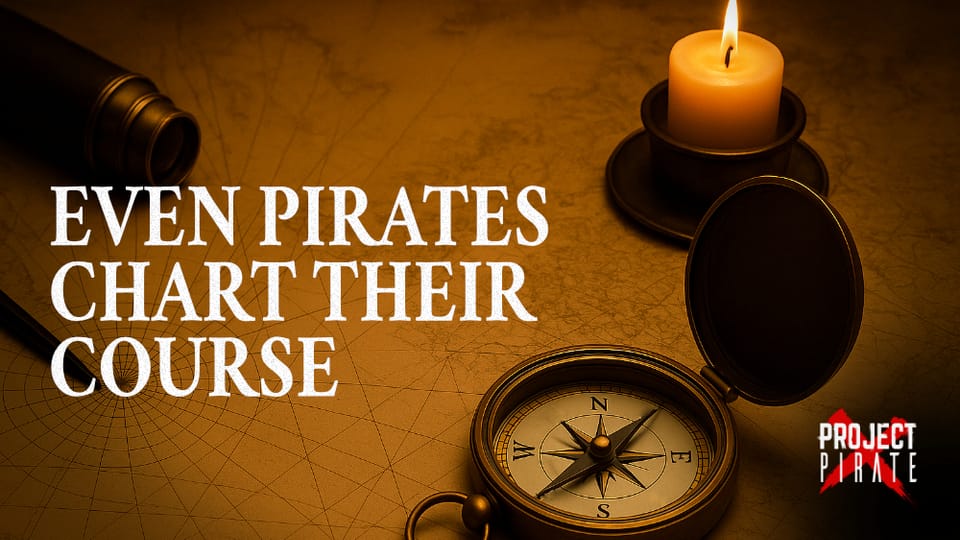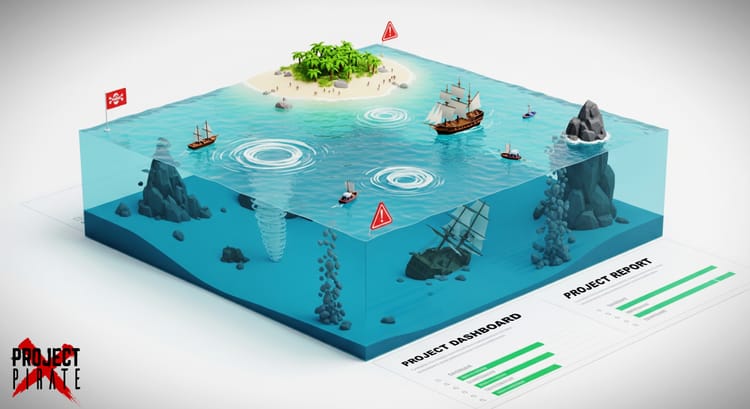Planning Isn't the Enemy of Agility - It's the Enabler

Why equating planning with waterfall is lazy thinking, and what real agility demands instead.
The False Binary
There's a persistent myth in the agile world that needs to walk the plank: the idea that planning is inherently anti-agile. If you're planning, you must be doing waterfall. If you're thinking more than two weeks ahead, you must be squashing innovation. This kind of binary thinking is not just incorrect; it's actively damaging to good delivery.
Planning is not the opposite of agility. Done right, planning is what makes agility possible.
Why Bad Planning Killed Good Planning
It's true that traditional waterfall approaches gave planning a bad name. Huge Gantt charts, fixed scopes, rigid phase gates and plans based on fantasy certainly led to disappointment and failure. But throwing out all planning because waterfall did it badly is like refusing to use maps because someone once got lost using one.
Waterfall failed not because it planned, but because it refused to re-plan.
Agile doesn't demand chaos. It demands adaptability.
What Agile Actually Says About Planning
One of the most misquoted lines from the Agile Manifesto is: "Responding to change over following a plan." Many stop there and assume it means "don't have a plan."
But look again: the manifesto doesn't reject planning. It just values responsiveness more. That implies a plan exists in the first place and can evolve.
Agile planning is:
- Continuous - not one-and-done
- Collaborative - not dictated
- Iterative - not static
Sprint goals, product roadmaps, quarterly objectives, release plans - these are all forms of planning that agile teams use successfully every day.
It's also critical to address another misunderstanding: planning does not mean command and control. There's an almost reflexive fear among some agile practitioners that planning must be authoritarian - driven from the top, rigid in structure, stifling in detail. But that's not planning. That's control masquerading as foresight.
Good planning is collaborative, adaptive and enabling. It helps teams make decisions, not just follow orders.
Why Planning Is Agile
Agile teams operate in complex environments. When you're dealing with interdependencies, technical debt, unknowns and shifting priorities, you need a directional plan to coordinate effort and decision-making.
Without planning, you don't get agility - you get chaos!
Planning in agile:
- Sets clear intent while allowing flexibility in execution
- Enables team autonomy because everyone understands the broader picture
- Surfaces risks early, so they can be managed, not discovered too late
Teams usually know where they want to go, but they underestimate the complexity of getting there. Planning helps bridge that gap between intent and execution.
"Good planning doesn't tell you where to go - it helps you get there intelligently."
The Complexity Multiplier: Why Scale Demands More Planning, Not Less
Here's where the anti-planning argument completely falls apart: complexity and scale.
A single team working on an isolated component might survive with minimal planning. They can pivot quickly, communicate through osmosis and adapt in real-time. But this luxury disappears the moment you add:
Multi-tier architectures spanning backend services, middle-tier APIs and multiple client applications. Suddenly, a "simple" change ripples across teams, technologies and release cycles.
Third-party vendor dependencies where your agility is constrained by someone else's roadmap, SLAs and integration timelines. That vendor's quarterly release doesn't care about your two-week sprints or monthly release cadence.
Cross-company integration following M&A activity, where you're not just coordinating teams but entire organisational cultures, toolchains and architectural decisions made by people who no longer work there.
Regulatory and compliance touchpoints that can't be "figured out later" without risking massive rework or legal exposure.
At this scale, the absence of planning doesn't create agility - it creates chaos. Each additional system, team, or external dependency multiplies the coordination overhead exponentially. Without deliberate planning to map these touch points, identify the critical path and sequence the work, you're not being agile... you're being reckless.
Risk compounds with complexity. In simple systems, unplanned changes might affect one team for one sprint. In complex systems, unplanned changes cascade across teams, vendors and release trains, turning a small misstep into a major program delay.
This is where diligent planning becomes a risk mitigation strategy. Good planning at scale:
- Maps the integration points before they become blocking issues.
- Sequences work to minimise costly rework and cross-team chaos.
- Identifies the longest poles so you can start critical path work early.
- Creates coordination protocols so teams aren't constantly firefighting each other's surprises.
- Establishes decision-making frameworks so delays don't cascade into organisational paralysis.
The irony is that many teams discover this the hard way. They start with minimal planning, hit their first major integration point and suddenly find themselves in "war room" mode - frantically coordinating across teams, vendors and systems that should have been planned months earlier.
"At scale, short-term sprint planning becomes the biggest enemy of agility."
A great technique that supports this kind of adaptive planning is rolling wave planning. Instead of trying to plan everything up front or limiting all plans to the current sprint, rolling wave planning accepts that some details will emerge over time. Near-term work is planned in greater detail, while future work remains higher-level until more information is available.
This approach complements agile beautifully. Whether you're planning in two-week sprints or looking ahead across a full Program Increment (PI) of 90 days, rolling wave planning allows your planning cadence to fit the complexity and uncertainty of your delivery. It's about being deliberate where you can and adaptable where you must.
When There's No Plan at All
Ironically, one of the most overlooked risks in agile teams today is not the wrong plan... but the absence of any meaningful plan at all.
In isolated development teams, it's possible for this to go unchallenged. Work gets picked up from the backlog, tasks get done and progress appears steady. But then reality hits:
- The team needs support from another group.
- They hit an integration point with another system.
- A dependency appears that wasn't considered.
And instead of shielding against delay or preparing proactively, the team accepts the delay as inevitable. They shrug and say, "That's just part of agile," or worse, blame another team or function for holding them up.
But the truth is this: better planning could have anticipated and avoided much of that delay.
In these situations, the lack of planning becomes a crutch, hidden under the banner of agility. Teams stop asking, "What could we have done earlier to prevent this?" and instead start hiding behind agile dogma as a justification for poor foresight.
Planning isn't about rigidly eliminating uncertainty. It's about creating enough structure so that when uncertainty appears, you can respond with clarity and speed; not confusion and excuses.
The Real Danger: Mistaking Tools for Strategy
Let's talk Kanban boards.
Yes, they're helpful. Yes, they improve visibility. But no they are not a plan.
Kanban boards help teams manage current work. They show what's in progress, what's blocked, what's done. That's great for flow. But they don't coordinate cross-team dependencies. They don't sequence deliverables. They don't reveal strategic intent.
A board is not a blueprint. It's a lens.
Kanban boards can absolutely support agility - but they're insufficient on their own for strategic alignment. In complex delivery environments, planning is what helps you:
- Align on why you're doing something.
- Agree on when key things need to happen.
- Understand what depends on what.
Kanban helps you not get lost. Planning helps you know where you're going. 🧭
Addressing the Anti-Planning Arguments
Before we dive into why planning enables agility, let's address the legitimate concerns that fuel anti-planning sentiment. These aren't straw-man arguments; they represent real risks that need acknowledgment.
"Complex systems are unpredictable - planning creates false confidence." This is true for detailed, long-term plans. But this argument conflates planning with prediction. Good agile planning isn't about predicting the future; it's about creating options and preparing for multiple scenarios. Rolling wave planning explicitly acknowledges uncertainty by planning near-term work in detail while keeping future work flexible.
"Time spent planning is time not spent delivering." Valid point - if planning becomes an end in itself. But this ignores the time saved by avoiding rework, miscommunication and confusion. The question isn't whether to plan, but how much planning provides the best return on investment. A day of good planning can save weeks of confused execution.
"Plans create psychological pressure and reduce team autonomy." This happens when plans become rigid commitments rather than collaborative agreements. The solution isn't to eliminate planning; it's to change how we treat plans. Plans should be shared mental models that enable autonomous decision-making, not performance contracts that punish deviation.
"Teams get attached to plans and resist necessary pivots." The sunk cost fallacy is real. But the answer isn't to avoid planning - it's to plan differently. Build review points into your planning process. Make plan revision a regular practice, not an emergency response. Celebrate good pivots as much as good execution.
"Customer feedback trumps any plan." Absolutely. But customer feedback without context is just noise. Planning helps you design experiments, sequence learning and interpret feedback meaningfully. You can't 'build-measure-learn' effectively if you don't know what you're trying to learn.
"Innovation emerges from constraints, not roadmaps." True - but constraint and context aren't the same thing. A good plan provides context (the "why" and "what's at stake") while leaving room for creative "how." The best innovations often come from understanding the broader challenge, not working in complete isolation.
The common thread in these concerns isn't that planning is inherently bad - it's that rigid, detailed, unchangeable planning is bad. That's something every agile practitioner should agree with.
Planning as an Enabler, Not a Constraint
Done well, planning doesn't restrict teams - it unlocks them.
It provides:
- Clarity, so people know what matters most.
- Confidence, so decisions don't get stuck.
- Context, so teams can make smart trade-offs independently.
Planning also allows teams to move faster... not slower; because they aren't constantly reacting to surprises. It creates a shared mental model that reduces noise and increases flow.
What Good Planning Looks Like in Practice
So what does effective agile planning actually look like at the team level? It's not about creating perfect predictions - it's about building the right habits and artefacts that support intelligent decision-making:
Planning Rituals That Work:
- Backlog refinement sessions that look beyond the current sprint to identify dependencies and sequence work logically.
- Planning poker or other estimation techniques that force conversations about complexity and risk.
- OKRs or similar goal-setting frameworks that connect daily work to quarterly outcomes.
- Dependency mapping that visualises how your work connects to other teams, systems and external factors.
Planning Hygiene: Good agile teams need discipline, not just standups. Are your plans visible to everyone? Are they reviewed and updated regularly? Does the team own and evolve them, or are they imposed from above? The most agile teams treat planning as a living practice, not a one-time event.
Planning Enables Better Metrics: Coherent planning also makes your agile metrics meaningful. Velocity trends, burndown charts and flow efficiency all depend on having some planned baseline to measure against. Without planning, you're not measuring progress - you're just counting activity.
The Confidence Factor
There's also a psychological dimension that planning advocates often miss: planning builds confidence. Not just for leaders and stakeholders (though that matters), but for teams themselves.
Uncertainty isn't just a technical problem... it's an emotional one. When teams understand the broader context, see how their work fits the bigger picture and have visibility into what's coming next, they can focus on execution instead of constantly worrying about what they don't know.
Planning reduces cognitive load by creating shared mental models. It turns "figuring it out as we go" from a heroic necessity into an occasional exception.
"Planning doesn't kill agility - it powers it."
Conclusion: Reclaim Planning from the Waterfall Myth
Let's retire the myth that planning is anti-agile. Let's stop pretending that working in two-week increments without a broader vision is heroic. Let's build plans that breathe... that adjust, evolve and guide.
Because the real test of an agile team isn't how little they plan. It's how well they adapt their plans without losing direction.
So plan. And re-plan. Often.
Your agility depends on it.



